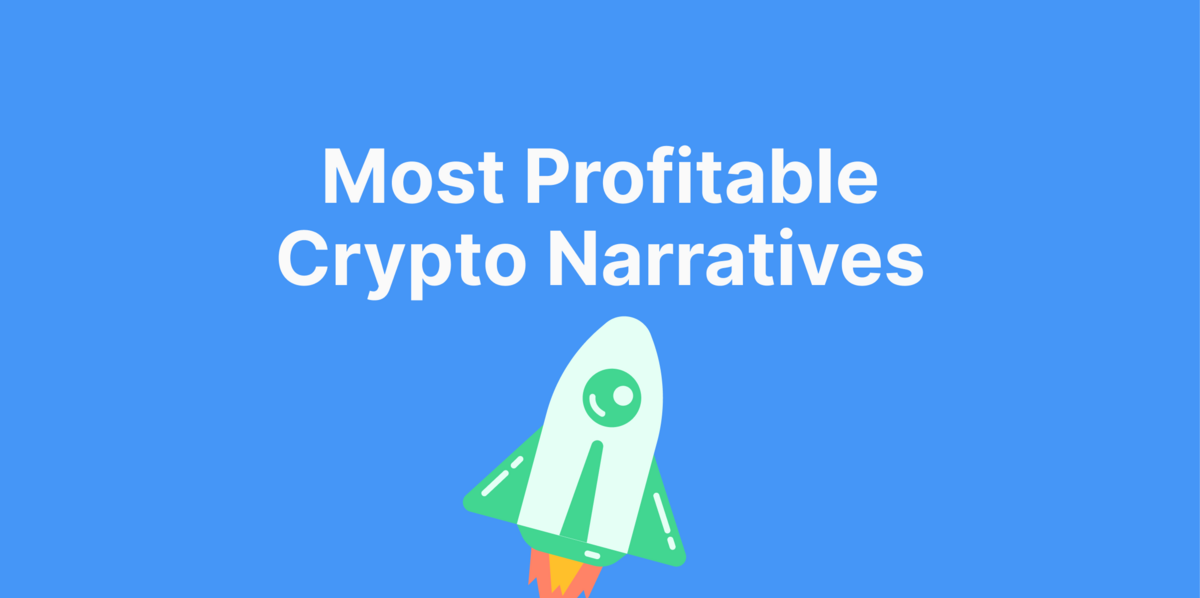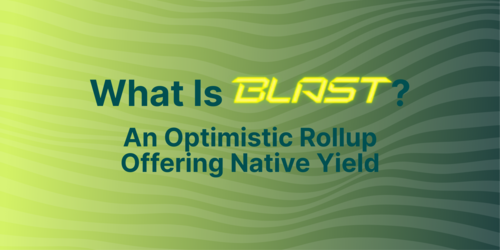There has been an ongoing meme about the value of governance tokens. Once seen as revolutionary for the crypto space, and helping kickstart DeFi Summer in 2020, market actors are starting to see a different picture.
 Source: CoinGecko
Source: CoinGecko
DeFi governance tokens have not seen the same hype and price action since the black swan event in May 2021. Bear market things aside, the drop is significant and represents an 85.4% decrease since the top. The $DPI only tracks DeFi protocols on Ethereum, but we have seen the same cycle occur on other chains as well. For these chains, the boom-and-bust cycle is typically even shorter.
In this article, we take a look at why the current version of governance tokens has largely failed, and what could possibly be done to fix its design.
What are Governance Tokens?
Governance tokens, as its name suggests, are tokens that supposedly give holders a say in the governance of a project, typically through a governance proposal + voting mechanism. The ambit of governance proposals is quite wide, and so long as the voting quorum is met, the proposal can be passed and implemented.
OG protocols like Balancer ($BAL), Compound ($COMP), and Maker ($MKR) are the earliest protocols to introduce governance tokens. However, the prevalent governance token model was arguably led by Compound’s $COMP token, which also kicked off DeFi summer.
Compound sought to distribute its $COMP token to its users in proportion to their on-chain activity over a fixed period of time. Essentially, users are rewarded according to how much they lent or borrowed on Compound. More than 10M $COMP was distributed in this manner, half of which went to the team and its investors. Naturally, Compound users exploded.
Why has this model become popular? Founders will tell you that governance tokens are spurring the ethos of decentralization, and to a certain extent yes - this mechanism has served as a way to distribute tokens and ‘decentralize’ the protocol. However the second, and perhaps more important aim, is for these tokens to serve as liquidity mining incentives in order to bootstrap liquidity. With competition so fierce in DeFi, it’s hard for a new protocol to provide a significant yield to attract liquidity, just from say spreads or transaction fees alone. The distribution of these “governance tokens” serves to supercharge the yield by providing returns on top of spreads or transaction fees. It is not uncommon for early projects to seed the value of their governance token in order to give investors the illusion that they are worth something. This is obvious with the APY calculations you see on DeFi protocols, which typically take into account the price of governance tokens if an investor sells them.
What are the Challenges with this Model?
Despite being the most popular model, there are many issues that are often overlooked. While it may not be fair to lump every governance token under this umbrella, it is safe to assume that most will exhibit some (if not all) of the following characteristics.
There is no direct value accrual to governance tokens
Value accrual is commonly seen as dividends (or sometimes shares/share privileges) given out to shareholders in TradFi. In crypto, however, this hardly exists for governance tokens. Any form of ‘rewards’ are usually distributed to liquidity providers (which is often temporary and unsustainable), or in a few cases governance staking programs. Some might argue that the APYs earned from governance staking programs are a form of value accrual, but as Cobie poignantly points out:
“They don’t do anything in any practical or technical sense. They don’t make an ecosystem more robust. They are a shell game, using the name of a different thing to obfuscate their actual purpose, which is to encourage less selling.”
Incorporating utility into the token is more unclear. Unlike TradFi, crypto is able to embed additional use cases on top of governance tokens. DeFi often achieves this effect by allowing governance tokens to act as collateral for borrowing other assets or lending them for interest; however, this is arguably not applicable. GameFi is another example where governance tokens are sometimes essential for the in-game economy. In any event, the lack of ‘direct value accrual’ or quantitative value (discussed further below) is apparent.
All for one and none for all
The combination of no value accrual, and lack of any utility from governance tokens creates a misalignment of incentives between token holders and the project, which is the opposite of what it was supposed to accomplish. This mismatched combination actually ends up incentivizing existing governance token holders to vote for their own self-interests, sometimes at the expense of the protocol. Since the growth of the protocol and its revenue does not usually lead to dividends or rewards, the likelihood of creating a community of short-sighted opportunists is high. Token holders are incentivized to pump the price of the token over everything else, e.g. staking programs that come with rewards but don’t actually do anything, aggressive buyback and burn programs, and airdrops. Long-term growth and broader community interests are especially difficult to sell to token holders, especially in a cutthroat environment like crypto where risks of rugging, failure, and forks are rampant.
Plutocracy is encouraged
Perhaps the disinterest to vote is fuelled by the nature of the 1 token :1 vote model. We covered this quite extensively in our previous article, but to sum up, governance tokens have inherited the share/equity model from TradFi which means we vote with our money. Just take a look at the whole Elon Musk saga and how he has bought over Twitter - all protocols with a governance token are subject to the same takeover/manipulation risks, except in DeFi, the risk of such an attack is even larger. Protocols are always at risk of governance attacks where malicious actors can often flash loan large sums of governance tokens to vote for their own proposals, thereby steamrolling the community.
Teams are improperly incentivized
Founders and other team members should rightfully be rewarded for their efforts to build a protocol. However, there is always the problem with sustained motivation. If the team is rewarded in the form of governance tokens even before the protocol’s goals and objectives have been met, is there any benefit to continuing working as opposed to hard/soft rugging? The solution for most protocols have been to introduce timelock mechanisms, paid out over intervals (usually several years). Nonetheless, this approach means that the team could technically sit on their hands and do nothing and be rewarded anyway. In reality, the most optimal effort-reward ratio is to pump the token price close to token unlocks. Again, due to the lack of value accrual, team members are also incentivized to be short-term opportunists, sometimes dumping their allocations right after they’ve been unlocked. This creates a significant stress on the market.
Mercenary liquidity
Liquidity makes or breaks a project. Even if you have high-value tokens, if there is no liquidity, no one can sell or buy them. To overcome this, projects must resort to liquidity mining incentives. The problem is that this attracts mostly mercenary capital. We have seen this play throughout different altchains. Usually, the initial phase involves high inflationary rewards to bootstrap liquidity and market activity. Yield farmers bridge over to extract as much value as possible from native DeFi protocols, leading to a short-term pump for both the network token and their respective governance tokens. Eventually, however, there will be a dumpage of ‘worthless governance tokens’ The same playbook can be repeated across each new and shiny chain. It is difficult to address this because of the nature of the automated market maker (AMM) model which most DEXs rely on. Until we can come up with a better alternative to create stickier liquidity, we expect to see this problem persist.
Voter apathy
Having the ability to vote and actually voting are different. Just like elections, voter apathy is quite common, especially amongst older ‘blue-chip’ DeFi protocols.
 Source: @RobertoTalamas
Source: @RobertoTalamas
Gas fees, disorganized proposal systems, and the belief that holders have zero impact are just some of the reasons why. Sometimes, the situation may seem dire when the majority of tokens are kept in the hands of the team, insiders, and whale investors anyway, and a “community vote” is often meaningless. Regardless, having the ability to vote but not vote at all defeats the purpose of decentralization.
Where does value come from?
Despite all its flaws, all things have a price, and therefore value. As an investor, why would investors buy a governance token? Analysts like to throw the word ‘fundamentals’ around but are really just a set of agreed-upon metrics that everyone collectively agrees, ‘demonstrates value’. In reality, the price of an asset is derived from a mixture of values.
To answer this, we break down the different components that give a token value. Strong parallels are drawn alongside stocks/shares since they gave birth to the concept of ‘intangible ownership and governance’.
Despite all this, valueless governance tokens are not a meme …
If we apply this framework, we can see that almost all governance tokens have no quantitative value. Instead, what they rely on is a mix of qualitative and speculative value which drives up prices. The nature of both speculative and qualitative values is that they are not definitive. This leaves room for prices to balloon and contract accordingly to the whims of overarching market narratives. As a savvy investor, this is not a bad thing because there is ample financial opportunity. If you are a profit-maximizing opportunist, you are probably waiting to sell it higher before everyone realizes that they get no direct financial benefit from holding the token. However, if you are a fundamental investor, you are looking for value accrual and that the protocol has a rewards/dividend program, or hoping that it eventually shares its revenue with you in the form of rewards/dividends.
All in all, if the existing governance token model only has a thin veil of decentralization and is subject to a host of other issues, why do protocols continue adopting this model? The answer is simple. Like all public-listed companies, by ascribing a pseudo-ownership of the protocol through tokens, the team can raise funds for the protocol and themselves. In other words, the team can either cash-out (as discussed above), grow the protocol, or do both. Airdrops to community participants are also a particularly useful technique to help create willing liquidity providers (accompanied with juicy yields), as well as market the protocol. All roads lead to valueless governance tokens.
Valueless might be a strong word as it would also contradict the framework discussed above. A lack of quantitative value accrual is perhaps a more apt description. But this is not an advocation piece for only buying tokens that have sustainable and long-term value accrual. Rather, it is to highlight that the conventional governance token model is a result of the capitalistic, lawless, and decentralized environment that is crypto. The current model rewards self-interests over the ‘greater good’. Team members are not immune either. We should be building governance models that actually facilitate alignment between all stakeholders, instead of pretending that it is all for decentralization. Innovation is not lacking in this space but it is underrated. Below are some of the interesting takes that have caught our attention.
LooksRare
LooksRare ($LOOKS) is an NFT marketplace that earns trading fees from NFT buyers/sellers. LooksRares’ governance token, $LOOKS, allows holders to stake and get a percentage of the protocol revenue (roughly 40% APY). The model is interesting because, unlike most protocols, rewards are paid out in $ETH and $LOOKS, suggesting strong incentive alignment and providing real dividends.
NFTs for governance
One method of mitigating voting manipulation is to only allow certain classes of voters to vote, specifically NFT holders. Most DeFi projects do not have NFTs, but we have seen many NFT communities allow their NFT holders to vote. Some examples include Cool Cats and Pudgy Penguins. Since NFTs are naturally more illiquid and have a lower supply, the likelihood of NFT holders being ‘true community members’ are higher and would vote in the best interests of the project. Another way of viewing this is to inadvertently restrict 1 vote to a wallet address.
ENS delegate model
Voter apathy is extremely common and one way around this is to allow delegation of votes. Most developed countries have already adopted this model, otherwise known as representative democracy. Ethereum Name Service ($ENS) employs a similar system where token holders are able to delegate their voting power (calculated based on the weight of token holdings) to voluntary delegates. While this is arguably more centralized, it does help address the issue of poor voter participation.
Optimism Two-House Model
Optimism appears to be adopting a US government-styled house model, much like the House of Representatives and the Senate. There aren’t many details available at the time of writing, but the model does indicate that the two bodies will have different jurisdictions to govern. It will be interesting to see how the L2 solution will maintain the interests of all parties involved.
 Source: Optimism
Source: Optimism
It is important to emphasize, however, that none of these examples should be perceived as the perfect model. We need to take bits and pieces from every case example and apply their relevant parts where necessary. Ultimately, we need to redesign the model from the ground up.

Benjamin is an ex-consultant who is tapping into his legal roots to explore the world of crypto. Follow the author on Twitter @NeBB399









 Or check it out in the app stores
Or check it out in the app stores